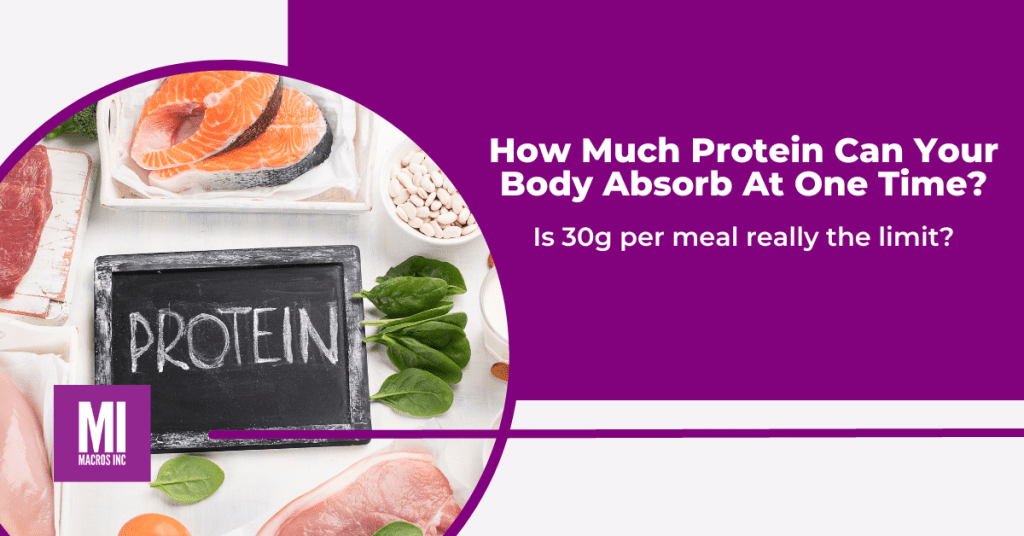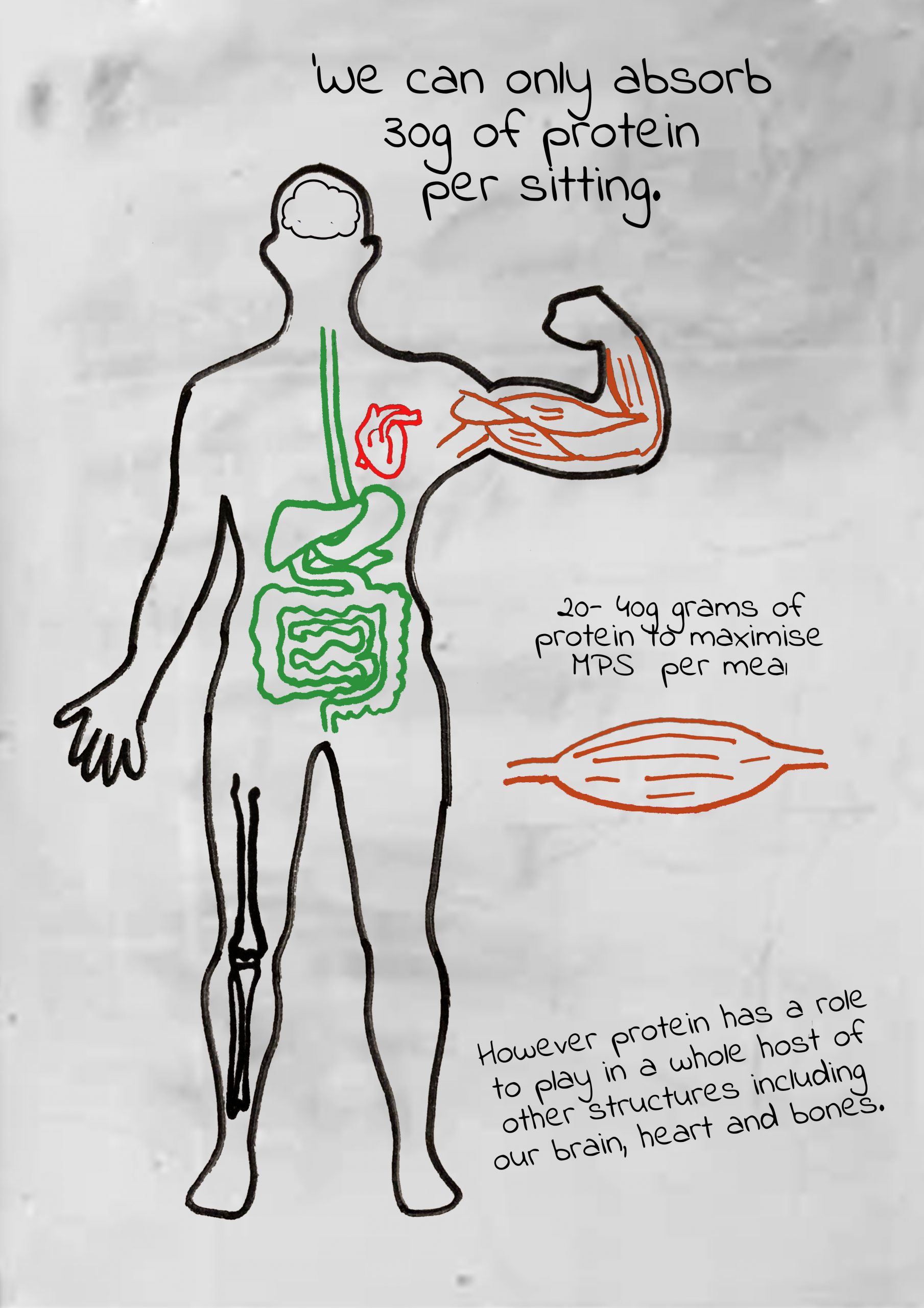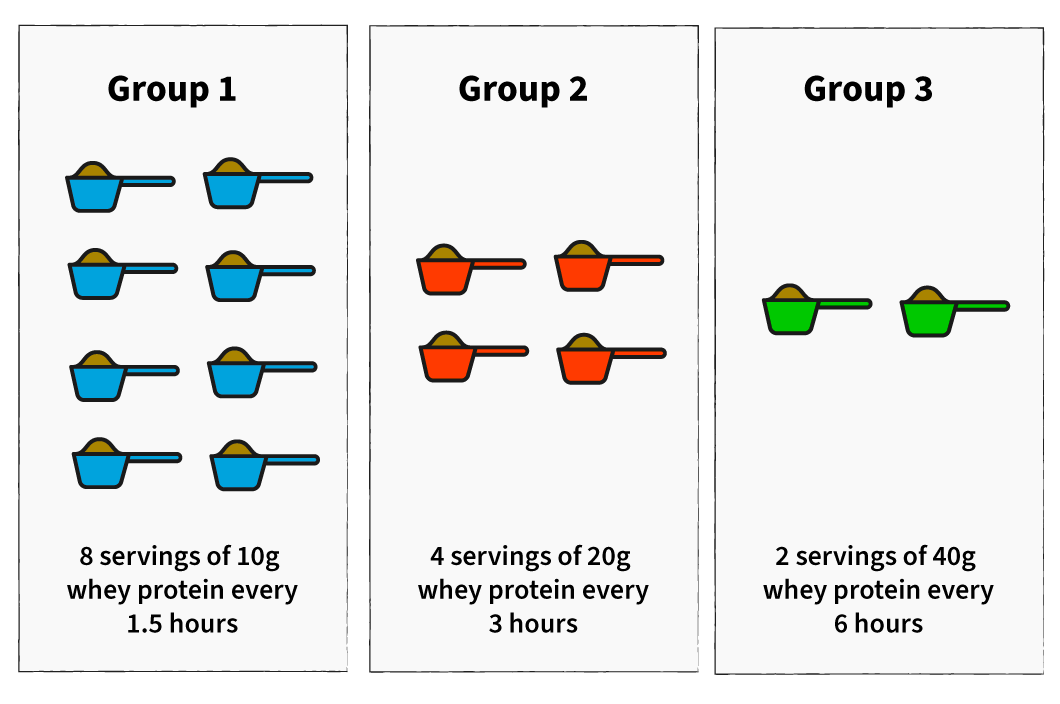How Much Protein Your Body Can Absorb At Once

The fitness world is rife with debates, but few are as persistent and potentially misguided as the idea that our bodies can only absorb a limited amount of protein at one sitting. This pervasive belief, often cited to justify frequent, small protein feedings, has become ingrained in diet plans and supplement marketing. But what does the actual science say, and how much protein can our bodies truly utilize to build and repair muscle?
This article will delve into the science behind protein absorption and utilization, examining the research that challenges the conventional wisdom of "protein bolus" limitations. It aims to unpack the complexities of protein metabolism, explore the factors that influence absorption rates, and provide practical guidance for optimizing protein intake for muscle growth and overall health. By analyzing credible sources and expert opinions, we'll separate fact from fiction, empowering readers to make informed decisions about their dietary choices.
Understanding Protein Digestion and Absorption
Protein digestion begins in the stomach, where hydrochloric acid and pepsin break down proteins into smaller peptides. These peptides then move to the small intestine, where enzymes like trypsin and chymotrypsin further break them down into individual amino acids.
These amino acids are then absorbed through the intestinal wall and enter the bloodstream, becoming available for various bodily functions, including muscle protein synthesis (MPS).
The rate at which this process occurs is influenced by several factors, including the type of protein consumed, the presence of other nutrients, and individual physiological differences.
Challenging the "30-Gram Rule"
The notion that the body can only absorb around 30 grams of protein per meal has been widely perpetuated, often without solid scientific backing. This idea suggests that consuming more than this amount at once leads to wasted protein, either excreted or stored as fat.
However, recent research paints a more nuanced picture. Studies suggest that the body's capacity to utilize protein is not limited to a fixed amount per meal but rather depends on factors such as body weight, activity level, and overall caloric intake.
For instance, a 2018 meta-analysis published in the Journal of the International Society of Sports Nutrition concluded that spreading protein intake evenly throughout the day, with doses exceeding 30 grams, could optimize muscle protein synthesis.
Factors Influencing Protein Utilization
Several factors play a crucial role in determining how efficiently the body utilizes protein. Body weight is a significant determinant; larger individuals naturally require more protein than smaller ones.
Activity level is another key factor. Those engaged in regular resistance training have higher protein needs to support muscle repair and growth compared to sedentary individuals.
The type of protein consumed also influences absorption rates. Whey protein, for example, is digested and absorbed more quickly than casein protein.
The presence of other macronutrients, such as carbohydrates and fats, can also affect protein absorption and utilization. Consuming protein with carbohydrates, for instance, can stimulate insulin release, which promotes amino acid uptake by muscle cells.
Research Findings: A Deeper Dive
A study by Moore et al. (2011) examined the effects of different protein doses on muscle protein synthesis after resistance exercise. The researchers found that MPS increased with increasing protein doses up to 40 grams, suggesting that the body can indeed utilize more than 30 grams of protein at once to build muscle.
Another study published in the American Journal of Clinical Nutrition investigated the effects of varying protein intakes on muscle protein synthesis over a 24-hour period. The study found that distributing protein evenly throughout the day, even in larger doses, resulted in greater muscle protein synthesis compared to consuming the majority of protein in one or two meals.
These findings suggest that the body's capacity to utilize protein is more flexible than previously believed and that optimizing protein intake involves considering both the total daily intake and the distribution of protein across meals.
Practical Implications and Recommendations
Based on current research, the focus should shift from rigidly adhering to the "30-gram rule" to optimizing overall daily protein intake based on individual needs.
For individuals engaged in resistance training, a daily protein intake of 1.6 to 2.2 grams per kilogram of body weight is generally recommended. This protein should be distributed across multiple meals throughout the day, rather than concentrated in one or two large doses.
It's also important to consider the type of protein consumed. Incorporating a variety of protein sources, including both fast-digesting and slow-digesting proteins, can help ensure a sustained release of amino acids into the bloodstream.
Individual factors, such as age, health status, and training goals, should also be taken into account when determining optimal protein intake. Consulting with a registered dietitian or sports nutritionist can provide personalized guidance.
The Role of Context: Calories and Energy Balance
It's crucial to remember that protein absorption doesn't occur in isolation. The body's response to protein intake is heavily influenced by the overall caloric and macronutrient context.
In a state of caloric surplus (consuming more calories than you burn), the body is more likely to utilize excess protein for muscle growth. However, in a caloric deficit (consuming fewer calories than you burn), some protein may be used for energy, potentially reducing the amount available for muscle protein synthesis.
Therefore, optimizing protein intake requires considering the entire dietary picture, including total caloric intake, carbohydrate and fat intake, and overall energy balance.
Looking Ahead: Future Research Directions
While current research has shed light on the complexities of protein absorption and utilization, further studies are needed to fully understand the nuances of this process.
Future research could focus on investigating the effects of different protein sources, timing strategies, and nutrient combinations on muscle protein synthesis in various populations, including athletes, older adults, and individuals with chronic diseases.
Additionally, studies could explore the role of gut microbiome in protein digestion and absorption, as well as the potential for personalized nutrition strategies based on individual genetic and physiological profiles.
Conclusion: Moving Beyond the Myth
The conventional wisdom that the body can only absorb a limited amount of protein at once is an oversimplification of a complex physiological process. While individual factors and context play a significant role, evidence suggests that the body can utilize more than 30 grams of protein in a single meal.
By shifting the focus from arbitrary limits to optimizing overall daily protein intake and considering individual needs, individuals can make more informed dietary choices to support muscle growth, recovery, and overall health. Focusing on consistent, adequate protein intake throughout the day, rather than rigidly adhering to outdated beliefs, is the key to maximizing the benefits of this essential macronutrient.


















